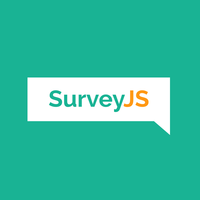Our great sponsors
-
webpack
A bundler for javascript and friends. Packs many modules into a few bundled assets. Code Splitting allows for loading parts of the application on demand. Through "loaders", modules can be CommonJs, AMD, ES6 modules, CSS, Images, JSON, Coffeescript, LESS, ... and your custom stuff.
-
SurveyJS
Open-Source JSON Form Builder to Create Dynamic Forms Right in Your App. With SurveyJS form UI libraries, you can build and style forms in a fully-integrated drag & drop form builder, render them in your JS app, and store form submission data in any backend, inc. PHP, ASP.NET Core, and Node.js.

Click "Start Test." WebPageTest generates a comprehensive report with details about the loading process, including time to first byte (TTFB), page load time, and visual progress. ### Setting Benchmarks with Lighthouse Start with Lighthouse audits to maximize the performance of your React application. Evaluate Lighthouse's scores and suggestions with careful consideration. Next, set benchmarks that are in line with industry norms or customized to meet your unique performance goals. Lastly, pay close attention to the places in your application where it needs work. You can improve your React application's effectiveness by carefully following these procedures, which will guarantee that it satisfies the required performance requirements. ### Analyzing Performance Results with WebPageTest In order to fully evaluate your webpage's performance, launch WebPageTest with a variety of systems, simulating a variety of user scenarios. Examine the waterfall chart carefully to identify loading patterns and bottlenecks, which are essential for improving the user experience. To see the page's rendering process over time and do a thorough examination, use filmstrip views. To effectively assess performance, pay special attention to measures such as time to first byte (TTFB), start render time, and fully loaded time. Also, a better understanding of performance variances is made possible by comparing findings across various test designs, which helps make well-informed recommendations for improving webpage responsiveness and efficiency. ## Impact of third-party libraries on React app performance Third-party library integration can speed up development while improving functionality in our React application. It's crucial to consider the possible effects on performance, though. Because heavy or poorly optimized libraries might negatively impact the speed and usability of our application. ### Bundle Size Look at the distribution file sizes related to the library, and use tools such as Bundlephobia or Webpack Bundle Analyzer to fully evaluate their impact on your bundle size. This thorough analysis enables you to make well-informed decisions about whether to include the library, making sure that its contribution minimizes superfluous bulk in your application's codebase and is in line with your optimization goals. ### Network Requests Analyze how the third-party library affects network requests to maximize performance. Reduce the number of requests made overall by minimizing external dependencies. This will enhance the user experience and loading speeds. Select appropriate libraries, maximize asset delivery, and leverage code splitting to load components asynchronously. You may improve the effectiveness and responsiveness of your application and provide users with a better experience by cutting down on pointless network queries. ### Execution Time Examine the library's code for any possible performance problems or bottlenecks in order to analyze the runtime performance of the library. Look for places where the code may execute slowly or inefficiently. You may ensure smoother operation inside your application by identifying and addressing any areas of the library's implementation that may be impeding ideal performance by doing a comprehensive assessment. ### Code Splitting for Third-Party Libraries Implementing code splitting is an effective strategy to load third-party libraries only when they are required, reducing the initial page load time. Use dynamic imports to load the library lazily:
In addition to being a best practice, performance optimization in React is crucial since it affects the user experience directly. The speed and responsiveness of your React app are critical factors in determining its level of success in the modern digital world, where customers want seamless, quick, and uninterrupted experiences.